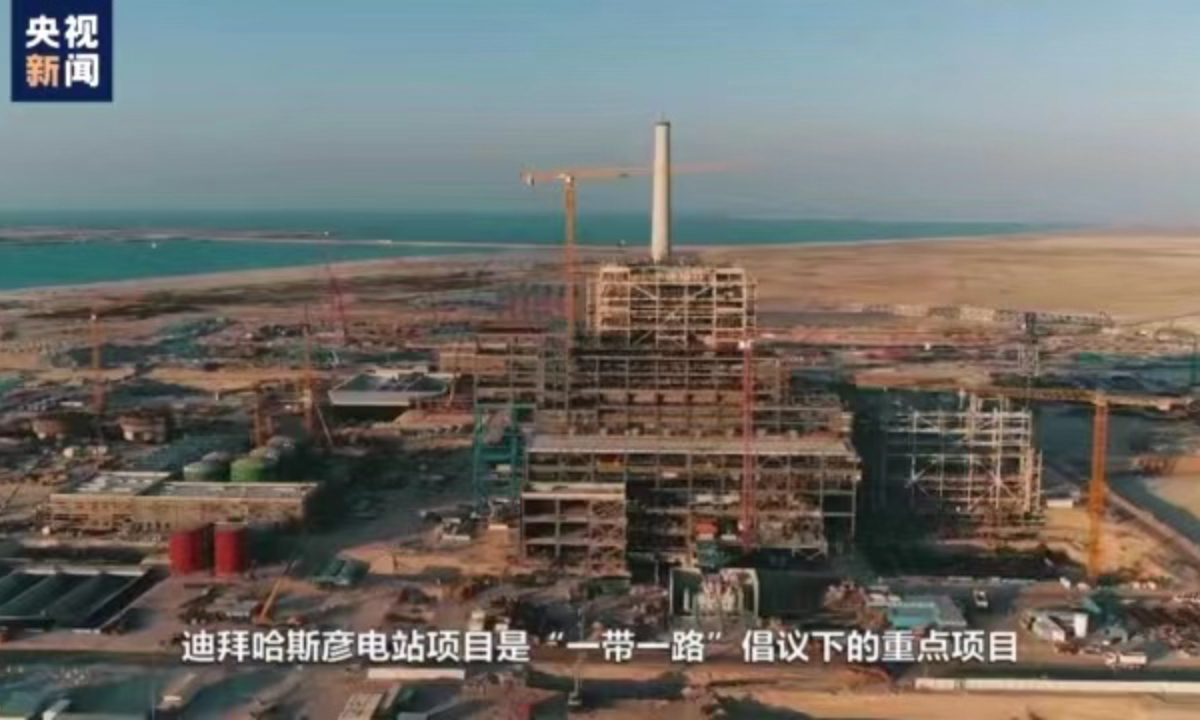
A screen capture of CMG report
Unit 3 of the Chinese-built Hassyan power plant in Dubai was successfully connected to the grid for the first time on Monday, reflecting closer cooperation between China and United Arab Emirates (UAE) in the energy sector.
The power plant is a key project under the Belt and Road Initiative (BRI), as well as a further example of Chinese joint investment, financing, design, manufacturing and construction of a signature offshore flagship project.
The project, located more than 30 kilometers south of Dubai by the sea, includes four ultra-supercritical units with a total installed capacity of 2,400 megawatts, making it the first power plant in the world with a dual-fuel full-load power supply capacity.
The successful grid connection of Unit 3 represents another major step after the grid connection of the second unit on May 3, 2021.
In order to promote the global targets of carbon peak and carbon neutral, all natural gas is used instead of coal in the Hassyan power plant. Moreover, the project has carried out environmental protection initiatives such as coral transplantation, lagoon fish migration and environmental monitoring during the construction period in a bid to further promote the green development of the BRI.
Duan Tengfei, the plant's Project Manager, said in an interview with China Media Group that Units 1 and 2 have been in safe and stable operation since coming online, and provided power support during the Dubai Expo 2020.
Following all four units entering commercial operation in 2023, they will provide 20 percent of Dubai's electricity and energy, which will not only significantly reduce the cost of electricity for local people and guarantee power supply in Dubai, but also promote the diversification of the local energy structure, Duan added.
Rafat Alam, another official involved in the project, praised the BRI for benefiting countries around the world, especially in the Middle East. The Hassyan Power Station project in Dubai will not only provide electricity to local people and businesses, but also created many local jobs during its seven years of construction and forecast decades of operation.
"We look forward to more cooperation between China and UAE in the future under the framework of BRI," Rafat noted.
Global Times




